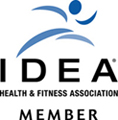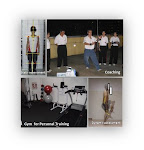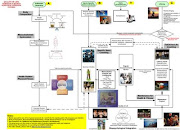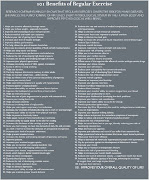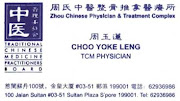MInd Training for TaiChi. Call +65 94312135 or email to tsenyu1@singnet.com.sg
TAI CHI SYNERGY SERVICES
The rack can be purchased and is specifically designed to achieve mobility (Refer to http://taichihealthfitness.blogspot.com/ for the full descriptions and purchases).
■ It allows you to stretch the anterior muscles of the chest and shoulders that are deemed short and often inflexible due to poor posture.
■ It mobilises the thoracic spine, increasing your ability to extend and rotate through this important area.
■ Mobilising the thoracic region helps increase the available movement in the shoulder and pelvic region, allowing us to move more freely and efficiently.
■ Serves as treatment equipment and later as fitness equipment during the maintenance phasse. Enhance quality of life over life cycle
Many good results and testimontials have been received from Sedentary adults, Yoga, Pilates and Tai Chi practioners / instructors, cyclists, runners, swimmers, golfers, tennis players, badminton players, dancers, scoliosis clients, clients with low back pain / hand numbness / nerves impingement etc.
Provides You With Physical Activity Tips and Recommendations.
Wednesday, December 18, 2013
LTAW2013 50km Fun Brisk Walk on 14 Dec 2013
Tuesday, October 22, 2013
15 km/ 20/ 22km FUN Day Brisk Walk on 15 Oct 2013. Start Point at Yew Tee MRT
We have done well in our 15-22km Fun Brisk Walk. Our statistics:
Number of Walkers = 27 pax
Reach Bukit Timah Summit = 23 pax
Finished the End Point = 16 pax
Well done. See you on 14 December 2013 for the 50km Walk.
Monday, September 9, 2013
Saturday, July 13, 2013
Using posturography to assess expertise among tai chi practitioners
Tai Chi, performed either seating or standing, is frequently recommended to improve various aspects of health, including balance, metabolic control, heart rate variability, sleep, or immune response. Many studies exploring mind-body interventions, both with self-reported or biologically-measured outcomes, report significant differences in outcomes among participants. However, neither the physiological or psychological mechanisms behind the variations are understood. The purpose of this study was to determine whether posturography is a useful method to assess physical skill level differences between experts and non-expert Tai Chi practitioners. While standing, participants performed a series of movements from the Tai Chi for Arthritis form based on Sun style (commencement, open/close, single whip and wave hands in cloud). Master trainers and senior trainers were considered experts; all others were considered non-experts. Body sway was assessed by the CAPS™ Professional portable computerized force platform (Vestibular Technologies, LLC.). Center of Pressure motion measures were normalized by the subject's height. While standing, the experts displayed statistically greater displacement excursion and velocity when preforming commencement and wave hands in clouds forms. The results of this pilot study indicated that posturography may be a useful method to assess the quality of Tai Chi movements and potentially link the expertise of Tai Chi practitioners to changes in health related outcomes
References
Geib RW, Roberts BL, Li H, Waite G, Pagnacco G, Oggero E.Biomed Sci Instrum. 2013;49:195-200
Friday, July 12, 2013
Positive impact of Tai Chi Chuan participation on biopsychosocial quality of life compared to exercise and sedentary controls: a cross-sectional survey
Abstract Tai Chi Chuan (TCC) is a traditional Chinese medicine practice and martial art with biopsychosocial aspects. This study aimed to examine the impact of participation in TCC on multiple domains of Quality of Life (QoL) and to assess the involvement of the psychological factors of self-efficacy, Locus of Control (LoC) and Hope in these effects. A total of 68 participants from the general community (13 males and 55 females) aged between 18 and 68 (M=43.55 years) and not currently suffering from a mental or physical illness took part in the study. It was found that TCC participants, as a group, scored significantly better than those in sedentary (book club) and active (gym exercise) control conditions on Psychological and Physical QoL, and that the Physical QoL benefits of TCC continue to accrue with years of practice. The three psychological factors were shown to variously mediate (self-efficacy) and moderate (internal LoC and Hope) this latter relationship. Whilst the results bear limitations (in particular small sample sizes), it is hoped that these findings will encourage further research into TCC, and consideration of TCC as part of the range of treatment options available in community-based mental and physical health management.
References
Baxter A, J P Francis A. J Complement Integr Med. 2013 May 24;10(1):1-10.
Thursday, July 11, 2013
Associations of Tai Chi, Walking, and Jogging With Mortality in Chinese Men
Moderate-intensity exercise has attracted considerable attention because of its safety and many health benefits. Tai Chi, a form of mind-body exercise that originated in ancient China, has been gaining popularity. Practicing Tai Chi may improve overall health and well-being; however, to our knowledge, no study has evaluated its relationship with mortality. We assessed the associations of regular exercise and specifically participation in Tai Chi, walking, and jogging with total and cause-specific mortality among 61,477 Chinese men in the Shanghai Men's Health Study (2002-2009). Information on exercise habits was obtained at baseline using a validated physical activity questionnaire. Deaths were ascertained through biennial home visits and linkage with a vital statistics registry. During a mean follow-up of 5.48 years, 2,421 deaths were identified. After adjustment for potential confounders, men who exercised regularly had a hazard ratio for total mortality of 0.80 (95% confidence interval: 0.74, 0.87) compared with men who did not exercise. The corresponding hazard ratios were 0.80 (95% confidence interval: 0.72, 0.89) for practicing Tai Chi, 0.77 (95% confidence interval: 0.69, 0.86) for walking, and 0.73 (95% confidence interval: 0.59, 0.90) for jogging. Similar inverse associations were also found for cancer and cardiovascular mortality. The present study provides the first evidence that, like walking and jogging, practicing Tai Chi is associated with reduced mortality.
References
Wang N, Zhang X, Xiang YB, Li H, Yang G, Gao J, Zheng W, Shu XO.Am J Epidemiol. 2013 Jun 27
Wednesday, July 10, 2013
Effect of skill level on cardiorespiratory and metabolic responses during Tai Chi training
Nowadays, Tai chi chuan (TCC) is practiced by millions worldwide with a range of skill levels. However, the effect of skill level on physiological response to TCC performance has yet to be clarified. In this study, physiological parameters during practicing simplified 24-form TCC were investigated and compared in 10 young high-level (HL) male TCC athletes and 10 ordinary-level (OL) male TCC practitioners with similar age and body size. Significantly higher energy expenditure, heart rate, oxygen uptake and tidal volume were found in HL group than OL group during TCC performance. The respiratory frequency and exhalation time were similar between the two groups during practicing TC; however, significantly less inhalation time was found in HL group (1.02±0.2 s) than OL group (1.12±0.28 s). Our results suggested that skill level may have considerable impact on metabolic and cardiorespiratory responses to TCC performance. TCC practitioners with different skill levels may practice TCC in different ways, which was supposed to lead to distinguishable response between the two groups
References
Eur J Sport Sci. 2013 Jul;13(4):386-91. doi: 10.1080/17461391.2011.635706. Epub 2011 Dec 5.
Thursday, June 13, 2013
Short Walks After Meals Could Help Control Glucose Levels in Older Adults
Sunday, April 28, 2013
Tai Chi May Benefit Those With Rheumatological Diseases
References
Archer, S. (2013, April 2013). Tai Chi May Benefit Those With Rheumatological Diseases. IDEA Fitness Journal, 81.Wednesday, March 27, 2013
TaiChi Practice Increases Brain Size
Shirley. (2012, November-December). TAI CHI PRACTICE INCREASES BRAIN SIZE. IDEA Fitness Journal, 69.
Tuesday, February 12, 2013
Tai Chi and Psoriatic Arthritis - Gentle movement, gentle spirit
References
1. National Psoriasis Foundation. (2005, Jan/Feb). Gentle movement, gentle spirit - Tai chi and psoriatic arthritis. PSORIASIS ADVANCE, 3
Hundreds of Exercises are Not as Good as Simply Walking; Walking is the Master of Hundreds of Exercises
Modern research has only recently confirmed something that the Chinese clearly knew over a thousand years ago – that regular moderate exercise enhances resistance to disease, improves emotional well-being and reduces the incidence and risk of high blood pressure, strokes and diseases like diabetes. Studies have shown that a moderate exercise like walking may actually produce greater results than more intensive cardio-vascular exercise. As proof some doctors point to the work of Hiroshi Nose:
Walking is the master of hundreds of exercises.
Sunday, February 3, 2013
My Core Services (Call SE Tan at 9431-2135 OR email: tsenyu1@singnet.com.sg)


Client Testimonials
Joan, Tai Chi student from Yio Chu Kang CC
"Hi Maureen, Enyu,
Thank you for taking time to prepare and share your knowledge at our training clinic on Sunday. Nice to have you around to share on your expertise. I think I speak for all attendees to say that we all brought back muck insight to our walking techniques.
FYI and already confirmed, we will also load the pictures into LTAW's website "
Ng Yousi - Let's Take A Walk 2009 - Chairperson
Weizhen Chen - Let's Take A Walk 2009 Committee
"I learnt loads and enjoyed Sat's session!" Thank you very much Coach Tan :)" - Tapering Training
" The whole team (Maureen, GG, Coach Tan and Jon) worked well with each other strengths, which I truly respect. Based on the tentative resulta, EneRgyworkz team was accompanied by other teams with similar timings. More importantly, the distance was finished and not with terrible injuries"
Diane, Shariff, GiaYee - EneRgyWorkz Marathoners NorthFace100 2009
"I am doing the exercise prescriptions every daily and really I am feeling better. Thank you very much with you around, I will be well"
Ang KH, Polytechnic Lecturer - walking deficiencies, cannot squat, diabetes and high blood pressure (under medication)
" Wishing you a Happy Teacher's Day (1st Sep). Thank you for your patience in helping your student auntie to heal. I managed to knee at church on Sunday. I am so happy that my legs does not hurt already. I will always remember you as my World Best Teacher :-) Thank you. "
Elise Nge, Business Executive
"I have followed the training methods you taught me on stretching and postural techniques; and now when I do my Tai Chi, my knee pain has disappeared. Truly appreciate and thank you so much for teaching me the scientifc ways of practising Tai Chi"
Bay MK, Product Promoter
" Thank you for treatment to solve my heel pain problem(plantar facsiitis). It really hurt me alot before I met up with you. You have trained me on the correct posture and your coaching is easily understood. Thank you"
Kelvin Koh, Pharmaceutical Manager
" Your treatments using T-Rack and corrective exercise therapy prescriptions allow me to correct my conditions and my pain has reduced tremendously. I can now do my self treatment at home and thank you for spending your valuable time"
Zubai, Business woman (Client with scoliosis)
"Dear Therapists of Let's Take a Walk 2008
8 months of planning, 13 committee members, 33 hours of event, close to 100 volunteers, over 900 participants and more than $60,000 raised. These are some numbers from Let's Take A Walk 2008 successfully held over the last weekend.
Thank you. Thank you to all of you who have sacrifice your time to help us over the weekend. Your contribution and professionalism has contributed to the success of our event."
Chan Peng, On behalf of Organising Committee 2008
Click here to download the full Your Prescription for Health flier series, or choose a flier below
Exercise is Medicine
Information and recommendations for exercising safely with a variety of health conditions.
Exercising with Amyotrophic Lateral Sclerosis
Exercising with Anxiety and Depression
Exercising with Atrial Fibrillation
Exercising Following a Brain Injury
Exercising Following Cardiac Transplant
Exercising with Cerebral Palsy
Exercising with Chronic Heart Failure
Exercising with Chronic Obstructive Pulmonary Disease
Exercising with Chronic Restrictive Pulmonary Disease
Exercising Following Coronary Artery Bypass Graft Surgery
Exercising with Cystic Fibrosis
Exercising with End-Stage Metabolic Disease
Exercising Following a Heart Attack
Exercising with Hyperlipidemia
Exercising while Losing Weight
Exercising with Lower Back Pain
Exercising Following Lung or Heart-Lung Transplantation
Exercising with Mental Retardation
Exercising with Multiple Sclerosis
Exercising with Muscular Dystrophy
Exercising with a Pacemaker or Implantable Cardioverter Defibrillator
Exercising with Parkinson's Disease
Exercising with Peripheral Arterial Disease
Exercising with Polio or Post-Polio Syndrome
Exercising with Type 2 Diabetes
Exercising with Valvular Heart Disease
Why We Need to Retool "Use It Or Lose It": Healthy Brain Aging
Johns Hopkins Arthritis Center
TaiChi Routines and Circuit Training Depot (road near the rail track is now accessible)
View Taichi Depots and Training Routes in a larger map
This requires a proper exercise prescriptions (daily and weekly) for individuals and appropriate circuit design (including bad weather) using existing natural environment (depending on individual preferences, preferably mixture of indoor and outdoor) around us to keep us healthy and fit. Time must be well-spend.
For example: some of my clients are doing warming up and stretching at home, their Taichi aerobic activties are done using the outdoor circuit and cooling down with Taichi routines followed by stretching near thereby their house. The re-hydration with fuild is done at home during rest followed by his bath. They have multiple version of programs (changing the variables of the components and types) for variety.
If you are interested, call +65 94312135 or email to tsenyu1@singnet.com.sg
TaiChi Jogging For Neuromuscular Body Alignment (11km)
View TaiChi Jogging Route (11km) in a larger map
Bukit Timah Nature Reserve Trekking

Refer to dotted "Red" route. Email to tsenyu1@singnet.com.sg if you want to be informed and to participate of this event. It takes less than 2 hours for complete circuit. Timing varies and depending on the fitness and size of the group. Learning and understand proper human walking mechanics and the need of conditioning for Activities of Daily Living (ADL)
Hiking Route from Yew Tee to Bukit Timah Hill & MacRitchie Trails
Bukit Timah Nature Reserve
--------------------------------
http://web.singnet.com.sg/~tsenyu1/Bukit_Timah_Hiking_Route_(From_Yew_Tee).jpg
MacRitchie hiking trails
---------------------------
http://web.singnet.com.sg/~tsenyu1/MacRitchie_Hiking_Trails_(From_Bukit_Timah_Nature_Reserve).jpg
If you are interested, call +65 94312135 or email to tsenyu1@singnet.com.sg
21km Route (Half Marathon)
View 21km Route (Half Marathon) in a larger map
LTAW - 50km Power Walk
View LTAW 2009 50Km PowerWalk in a larger map
LTAW 50 - 100km Extreme Walk
View LTAW 2009 50-100Km ExtremeWalk in a larger map
.jpg)




























